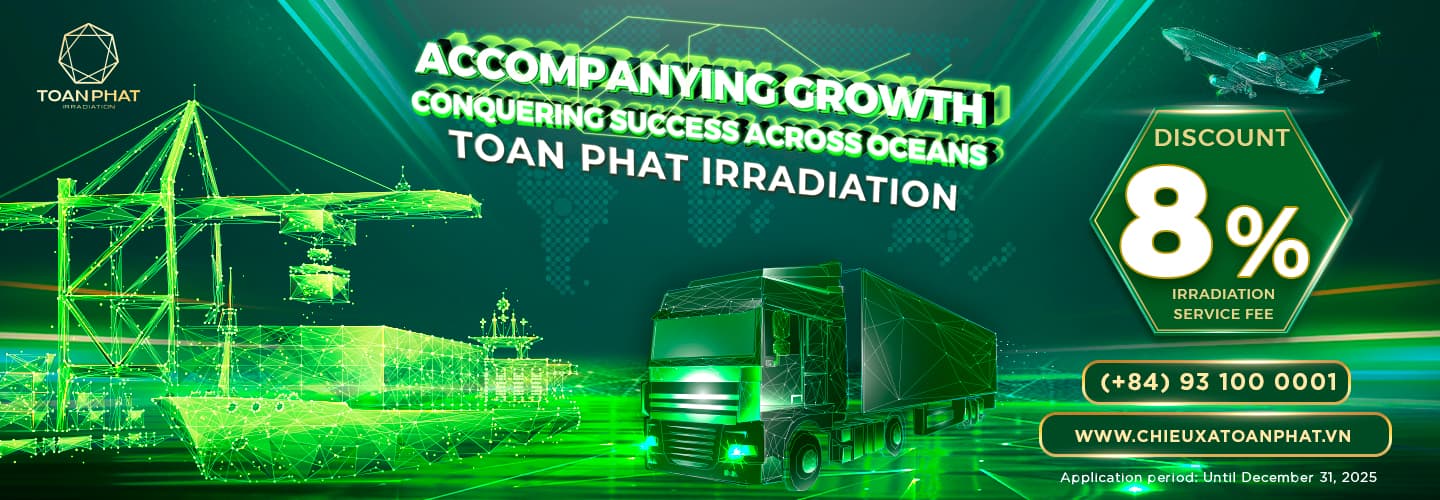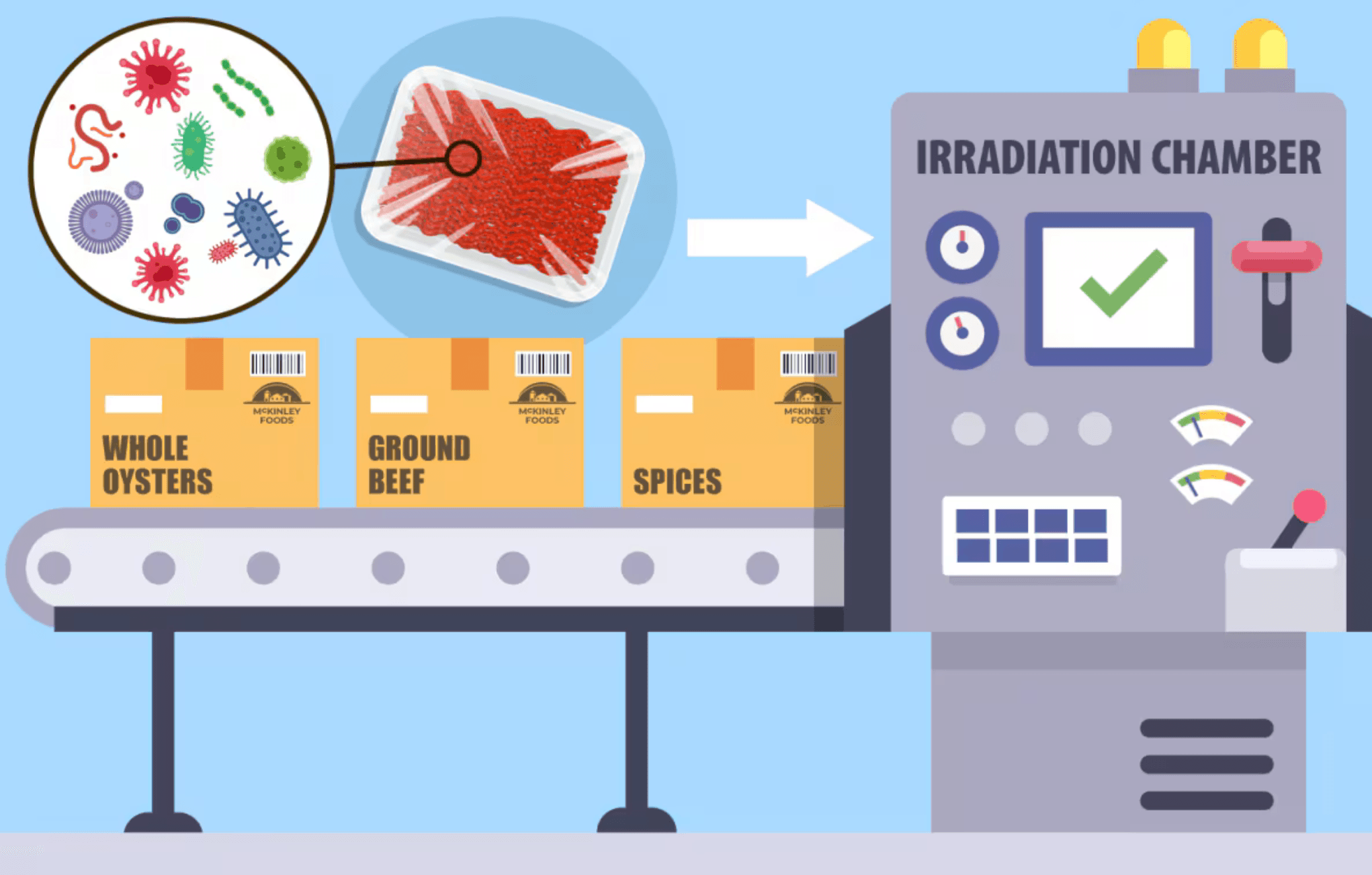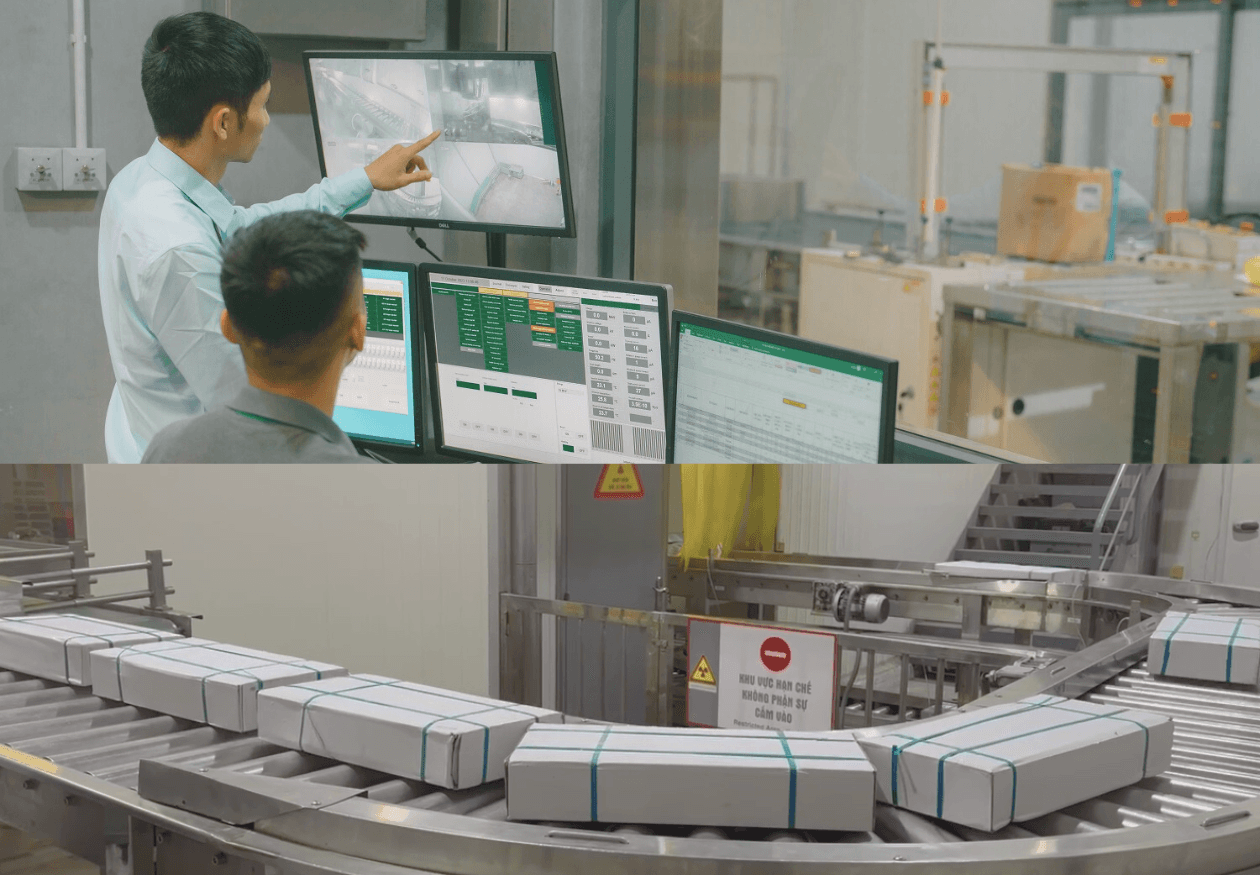International studies on irradiation in food preservation and safety

Food irradiation technology is a technique that uses ionizing radiation to destroy harmful microorganisms, prolong the preservation time and ensure food safety. This process uses three main radiation sources: gamma rays (Cobalt-60 source), electron beam accelerator (E-Beam) and X-rays.
History of irradiation technology development
Food irradiation technology has been studied since the 1900s when scientists realized the ability to kill bacteria with radiation. During the 20th century, this technology became an important method in the food industry, especially in developed countries. Many studies and tests have been conducted to evaluate the safety and effectiveness of irradiation.
Benefits of food irradiation technology
After many years of research and development of domestic and international standards, with many benefits, more than 60 countries in the world have regulations allowing the use of irradiation for many different types of food.
Destroy harmful microorganisms: Food irradiation helps eliminate dangerous microorganisms such as Salmonella, Listeria and E. coli, ... thereby reducing the risk of food poisoning and protecting the health of consumers.
Extend the storage time: Irradiation helps minimize food spoilage, especially during long-term transportation and storage, helping to improve quality and avoid food waste.
Maintain the sensory and nutritional quality: Many studies have shown that irradiation does not change the taste, color or nutritional value of food, helping to ensure the naturalness and quality of the product.
Safe and no radioactive residue: Food irradiation uses ionizing radiation sources and ensures that food is free of radioactive residue after processing, helping consumers feel secure when using it.
Although irradiation technology brings many benefits, widespread implementation still faces many barriers. High investment costs, insufficient awareness of consumers and complex legal regulations make this technology not widely applied in many countries. For food irradiation to become a standard solution in the food industry, long-term strategies are still needed to overcome limitations, increase efficiency and benefits.

Food is placed in an irradiation chamber, where radiation damages the bacteria's DNA, rendering them inactive. This process makes food safer and protects consumers' health (Image: cdc.gov)
Applications and prospects of irradiation technology
Not only supporting the food industry in ensuring food safety, irradiation also has the potential to combine with modern preservation technologies to optimize efficiency.
1. Widely used in the food industry
Irradiation technology has been applied in the quarantine of fruits, preservation of vegetables, meat, seafood and other agricultural products. This is an effective solution to ensure safety and prolong the shelf life of food.
2. Combined with other preservation technologies
Irradiation can be combined with modern preservation methods such as freezing or modified atmosphere packaging (MAP) to optimize the effectiveness of food preservation.
3. Expanding export markets
Many countries require imported food to be irradiated to ensure compliance with international food safety standards. Thereby, opening up great opportunities for food exporting businesses globally.
Assessments from international organizations
More than 30 international organizations have published studies and confirmed that food irradiation is completely safe.
- The US Food and Drug Administration (FDA) has approved irradiation technology as a safe and effective process in food preservation.
- The World Health Organization (WHO) and the International Atomic Energy Agency (IAEA) have conducted many studies on the effects of irradiation on food, confirming that this technology is not harmful to human health.
- The US Department of Agriculture (USDA) and the US Environmental Protection Agency (EPA) have also confirmed the safety and effectiveness of the irradiation method.
- The National Aeronautics and Space Administration (NASA) uses food irradiation to preserve food for astronauts on long-term space missions.

Irradiation treatment system using electron beam accelerator (E-Beam) at Toan Phat Irradiation Plant
Summary of studies on the safety and efficacy of radiation therapy
Below is a summary of some studies by reputable organizations on food irradiation technology. These reports provide detailed insights into the safety standards, benefits and applications of irradiation in the food industry.
1. "Food Irradiation: A Technique for Preserving and Improving the Safety of Food" – World Health Organization (WHO), 1988.
The report emphasizes that irradiation is an effective method in preserving and ensuring food safety. In particular, the impact of gamma rays using Cobalt-60 source in irradiation treatment is highly appreciated in destroying microorganisms.
Link: WHO, 1988
2. "Safety and Nutritional Adequacy of Irradiated Food" – World Health Organization (WHO), 1994.
Comprehensive assessment of the safety and nutritional value of irradiated foods, confirmed that gamma irradiation using Cobalt-60 source is not harmful to human health.
Link: WHO, 1994
3. "High-Dose Irradiation: Wholesomeness of Food Irradiated with Doses above 10 kGy" – Food and Agriculture Organization of the United Nations (FAO), World Health Organization (WHO), International Atomic Energy Agency (IAEA), 1999.
Safety testing of food irradiated with high doses (>10 kGy), including gamma rays using Cobalt-60 source. It was concluded that the irradiation method is safe for consumers and does not produce harmful radioactive residues.
Link: WHO, 1999
4. "Radiation Technology for Food Preservation" – Radiation Physics and Chemistry Megazine, 2002.
Presents applications of radiation technology in food preservation, emphasizing the effectiveness of gamma rays using Cobalt-60 source in destroying harmful microorganisms, as well as the economic and food safety effects of food irradiation technology.
Link: Radiation Physics and Chemistry, 2002
5. "Irradiation of Food: An FDA Consumer Update" – US Food and Drug Administration (FDA), 2010.
The FDA affirms that food irradiation is a safe technique that reduces the risk of food poisoning and extends shelf life.
Link: FDA, 2010
6. "Scientific Opinion on the Chemical Safety of Irradiation of Food" – European Food Safety Authority (EFSA), 2011.
The report examines the chemical safety aspects of food irradiation technology. It confirms that the irradiation method is safe for human consumption and ensures that no dangerous chemical reactions are produced.
Link: EFSA, 2011
7. "Safety of Irradiated Food" – Centre for Food Safety, Hong Kong, 2014.
The report assessed the safety of irradiated foods, including the use of Cobalt-60 sources, and concluded that the method is not harmful to human health.
Link: CFS, Hồng Kông, 2014
8. "Meat Irradiation: A Comprehensive Review of Its Impact on Food Quality and Safety" – Foods Megazine, 2023.
Overview of the effects of meat irradiation with gamma rays using Cobalt-60 source, on food quality and safety. Confirmation of the effectiveness of irradiation method in destroying harmful microorganisms without affecting sensory quality and nutritional value.
Link: Foods, 2023
9. National standard TCVN 12076:2017
Detailed regulations on the process of using ionizing radiation in food processing, ensuring safety and leaving no radioactive residue.
Link: TCVN 12076:2017
Thus, through many studies and publications by prestigious international organizations, it shows that food irradiation technology is an advanced, safe and effective solution in preserving and ensuring food quality. Although there are still some challenges in application, with recognition from many international organizations, irradiation is increasingly widely applied and promises to bring many benefits to the global food industry in the future.
Toan Phat Irradiation Plant
Hotline: 093 100 0001
Fanpage: www.facebook.com/chieuxatoanphat
Website: http://www.chieuxatoanphat.vn/
Address: Lot A24-1, Ngang 1 Street, Phu An Thanh Industrial Park, An Thanh, Ben Luc, Long An.



